Olga Gaigerova
Your education: Children’s Art School, Interior Design courses, private Japanese painting school by E. Zhegulova, as well as several online courses by S. Usik, I. Kukrusova, A. Sera.
Describe your art in three words: Romanticism, realism, expressionism.
Your discipline: Graphic techniques, creating landscapes, and animalistic art.
Can you tell us about your journey in the world of art? What inspired you to start painting?
I began drawing as a child and have continued throughout my life. As a child, I would look at paintings by old masters and be amazed at how paint and brushes could create three-dimensional figures on a flat surface, bringing them to life for me, creating a unique world. I wanted to be part of that world and learn how to create something beautiful and impressive myself. Over time, painting became essential for me—it’s a part of both my work and relaxation, offering a way to express myself. Creativity, of course, brings a sense of freedom; it makes you want to breathe and live. Creating a painting combines your inner world, emotions, skills, and techniques. Many things can be inspiring, but nature and animals are the primary sources. Nature, in my view, is the most important and perfect artist. Everything in nature is harmonious, and I want to convey that balance and beauty. After mountain trips, I always paint several landscapes.
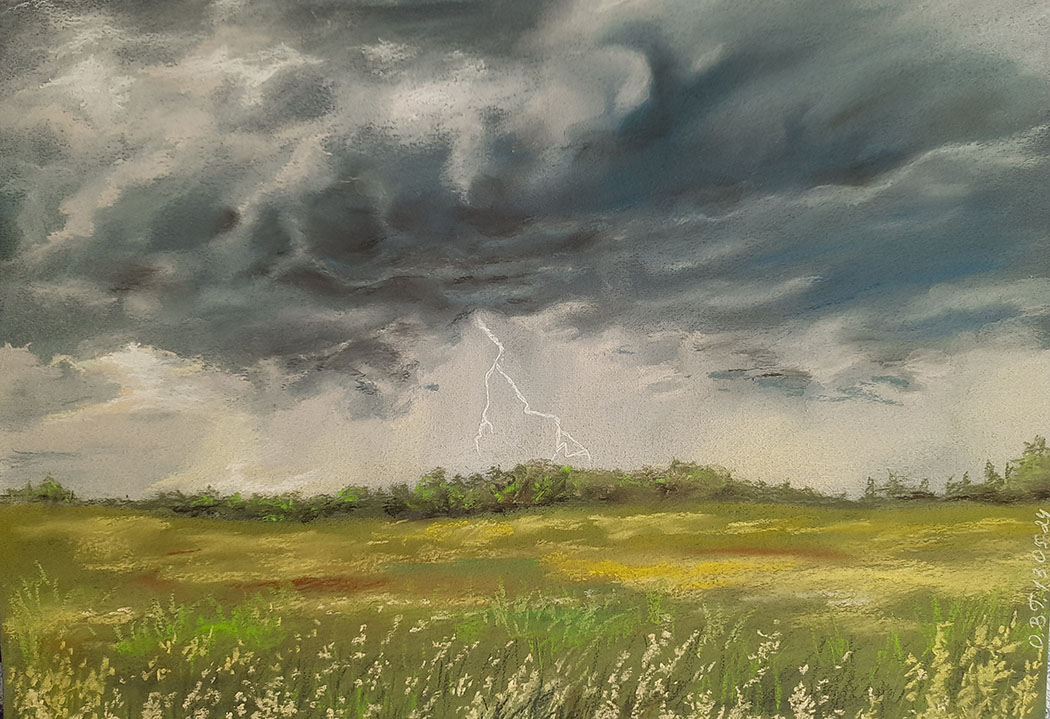 Olga Gaigerova | Element | 2024
Olga Gaigerova | Element | 2024
You use a variety of techniques including pastel, watercolor, ink, and sumi-e. How do you decide which medium to use for a particular piece?
It all depends on the purpose of the work and what effect I want to achieve. Pastel is a versatile and tactile material that allows for creating realistic works, so I use it for hyperrealism. If I want to convey expression and movement in a landscape, I might leave visible strokes in a pastel work. For a more graphic approach or to add philosophical depth, I turn to sumi-e. I love painting winter landscapes with snowflakes in the sumi-e style because the work becomes multi-layered, with an interesting atmospheric tone. The fibers of the rice paper help with this effect, as the ink and paint spread along them. I enjoy using watercolor for quick sketches, often without a pencil draft, so the pieces remain lively, flowing, and breathing.
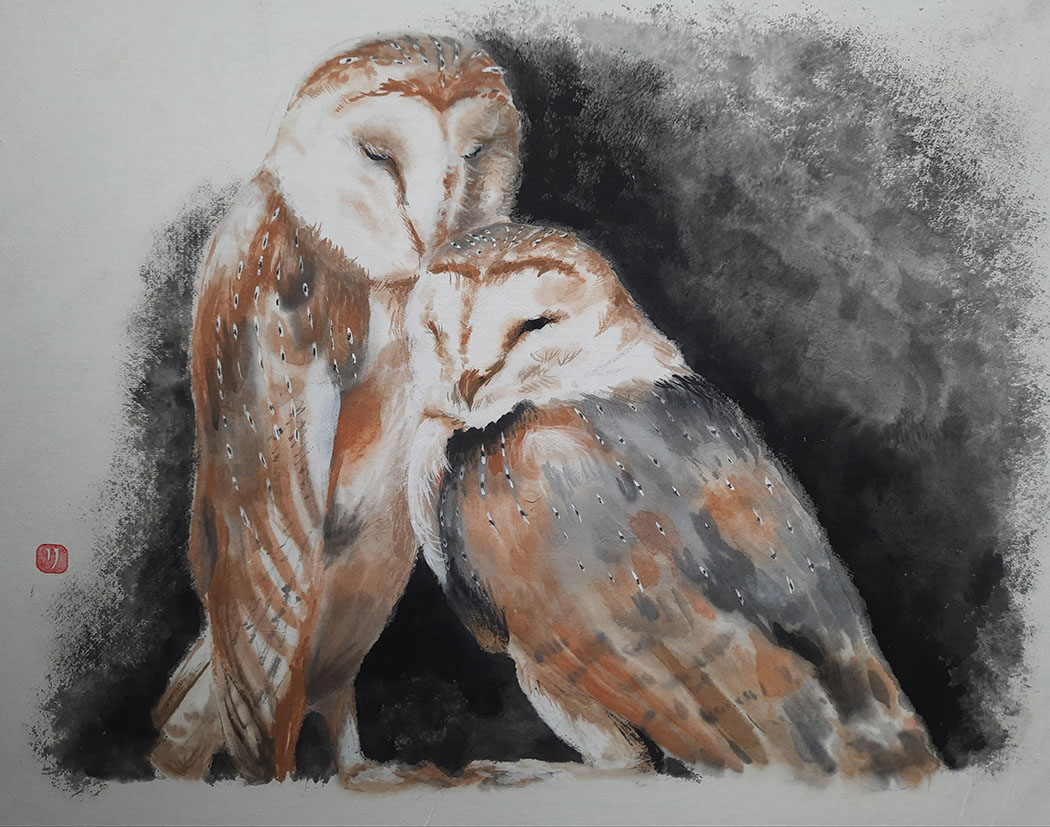 Olga Gaigerova | A Pair of Barn Owls in the Attic | 2019
Olga Gaigerova | A Pair of Barn Owls in the Attic | 2019
What draws you to the subjects of landscapes and animals?
Landscapes allow you to demonstrate all your skills and knowledge—there is drawing, composition (especially in buildings and structures), tone, multi-layering, and so on. A landscape captures a moment in the life of nature or a city. Animals have always amazed me with their grace, spontaneity, and diversity. When you look into the eyes of a cat with narrow pupils, it feels like there’s a whole universe, another world in there. Watching a horse moving freely, you become captivated by the play of muscles and the freedom of movement! And the energy emanating from wild animals is so powerful—I want to capture all of that on flat paper and bring it to life! I believe animals should be loved and protected as part of nature and our planet. Many species are on the verge of extinction, and if they are not saved, they will only remain in photos and paintings. That’s why it’s important to try and capture what you see now because it might be gone tomorrow. Our world is so fragile!
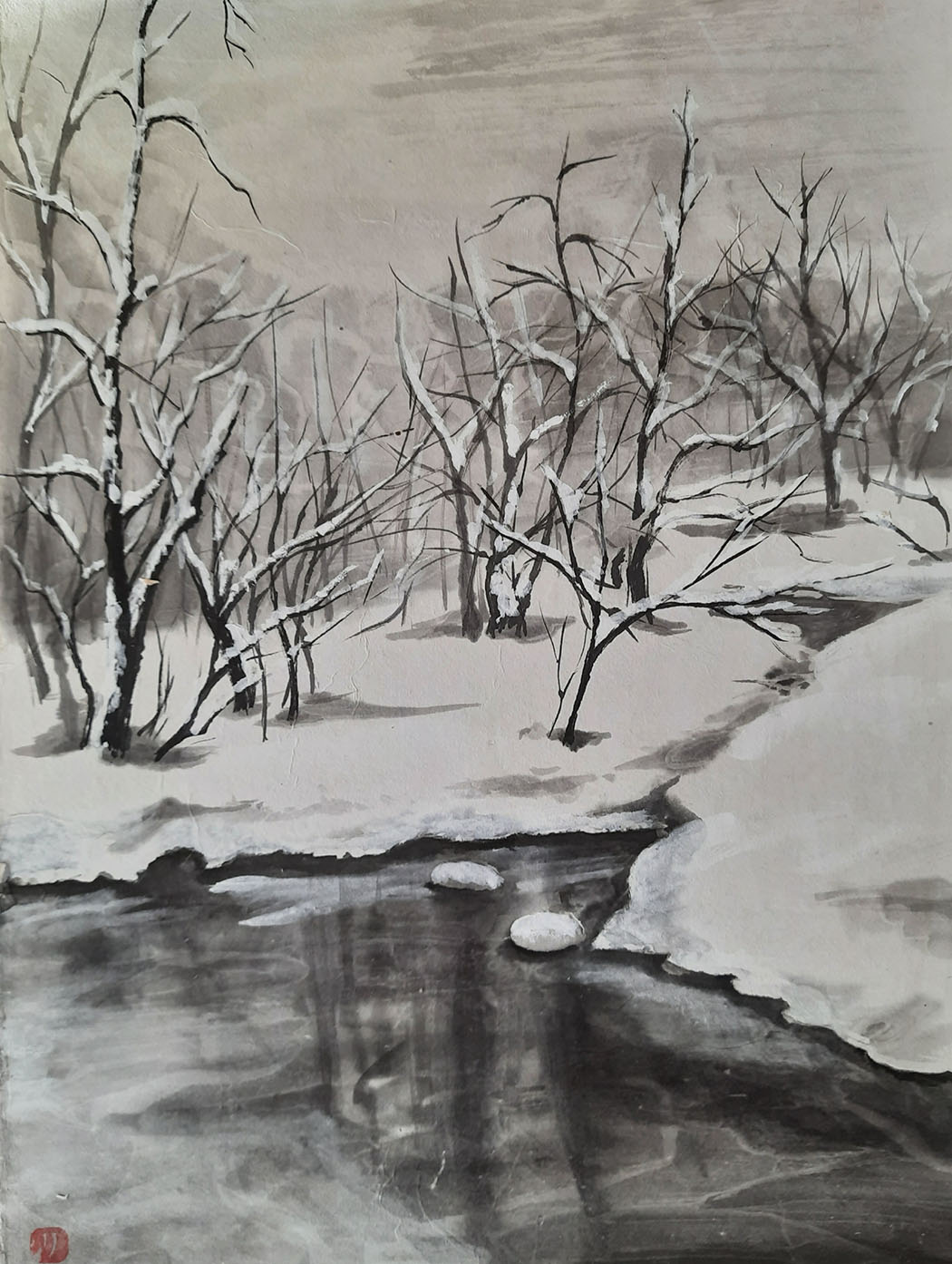 Olga Gaigerova | Winter Tranquility | 2019
Olga Gaigerova | Winter Tranquility | 2019
How does the practice of sumi-e painting differ from other techniques you use?
The sumi-e technique is less common compared to others like oil, watercolor, or acrylic. It is often confused with watercolor, but it is not just a separate technique—it’s an entire philosophy. Sumi-e is also known as Japanese painting and translates to ‘ink and painting.’ The works are created on rice paper, which is very thin, like a tissue, easily tears, and has its unique texture and fibers. The painting is done directly with ink, and mineral paints can be added. The ink spreads across the paper, and the artist must control this process. As a result, the drawing resembles a free-flowing dance, and you never know exactly what the final outcome will be. It’s always a living drawing, and mistakes cannot be corrected—you have to start over. The Japanese also have their own symbolism, like the peony symbolizing wealth and being a masculine flower, while the magnolia is feminine. Bamboo represents resilience. These elements must be considered when creating traditional sumi-e compositions. Besides technique, there are philosophical aspects—there is no symmetry in nature, so the painting should be asymmetrical, with the main subject shifted from the center. Ambiguity and emptiness are encouraged, allowing the viewer to create their own story. Sumi-e works are like films with open endings, and that’s their charm.
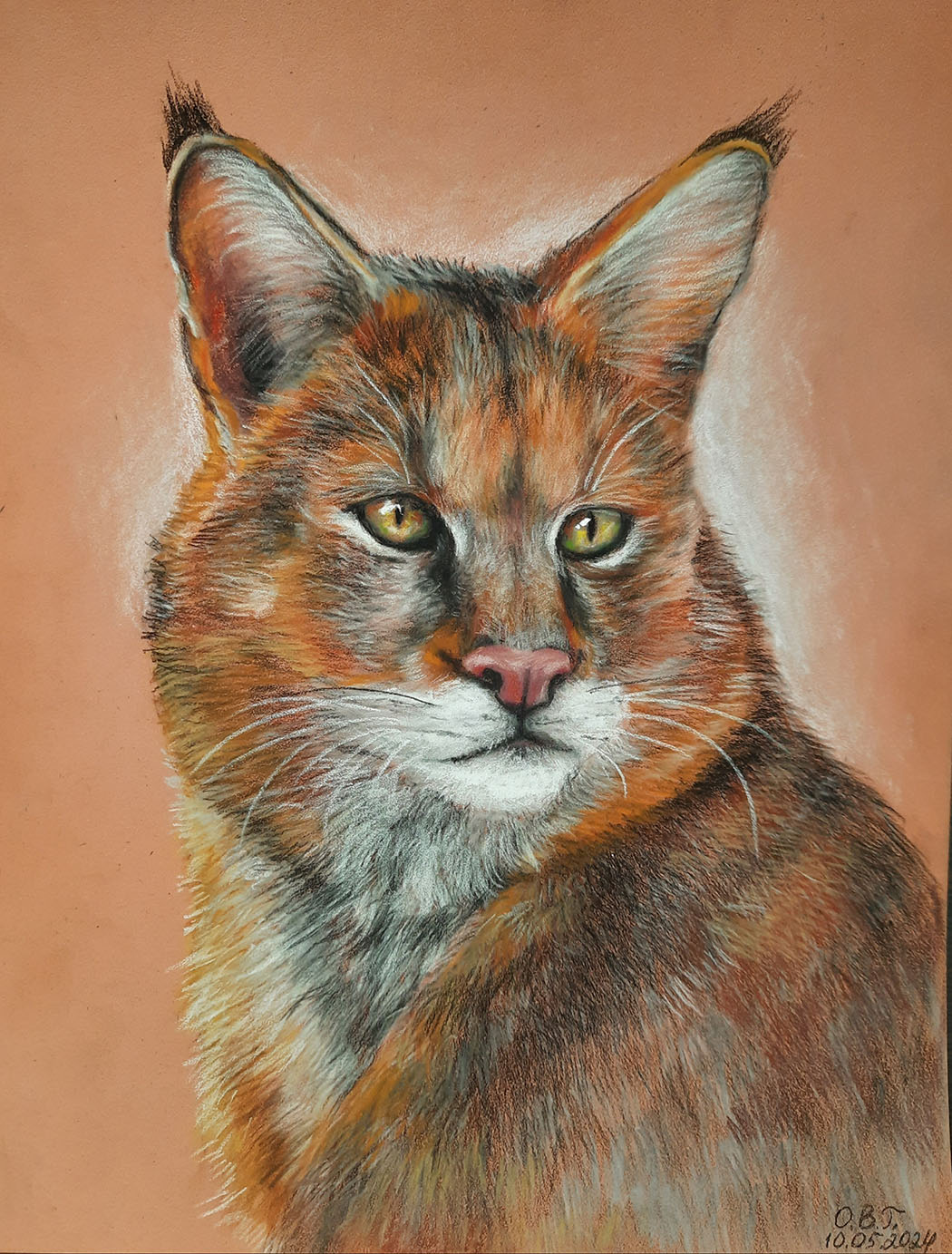 Olga Gaigerova | Reed Cat | 2024
Olga Gaigerova | Reed Cat | 2024
Can you explain the therapeutic aspects of creating art for you?
Art is a way of self-expression, self-discovery, and searching for oneself. You can’t paint something that doesn’t resonate with you or that you don’t like. In art, every stage is important—the birth of an idea, preparation, the creation process, and the final result. An additional stage is the sale of a painting when your creation finds a new home. The painting holds your emotions and experiences. You shift your focus from daily concerns to the new world you are creating. For me, art is a source of energy, a way to replenish my life force. It’s said that to receive, you must first give. The same goes for paintings—you give energy at first, but then it returns to you, doubled.
Who are some of the artists that have had a significant impact on your work?
As a child, I was strongly influenced by the paintings of the Pre-Raphaelites. I was enchanted by their narrative scenes, symbols, and color palettes. Later, I was drawn to Surrealist artists, whose paintings felt like riddles to be solved. After finishing school, I learned that the famous painting ‘The Chocolate Girl’ by Liotard was created using pastel, and that sparked my desire to explore this medium. That’s when I bought my first pack of pastel sticks. Among contemporary artists, I admire the pastel landscapes of Sergey Usik and Olga Abramova. I was introduced to Japanese painting through my teacher, the artist from Rostov, Ekaterina Zhegulova.

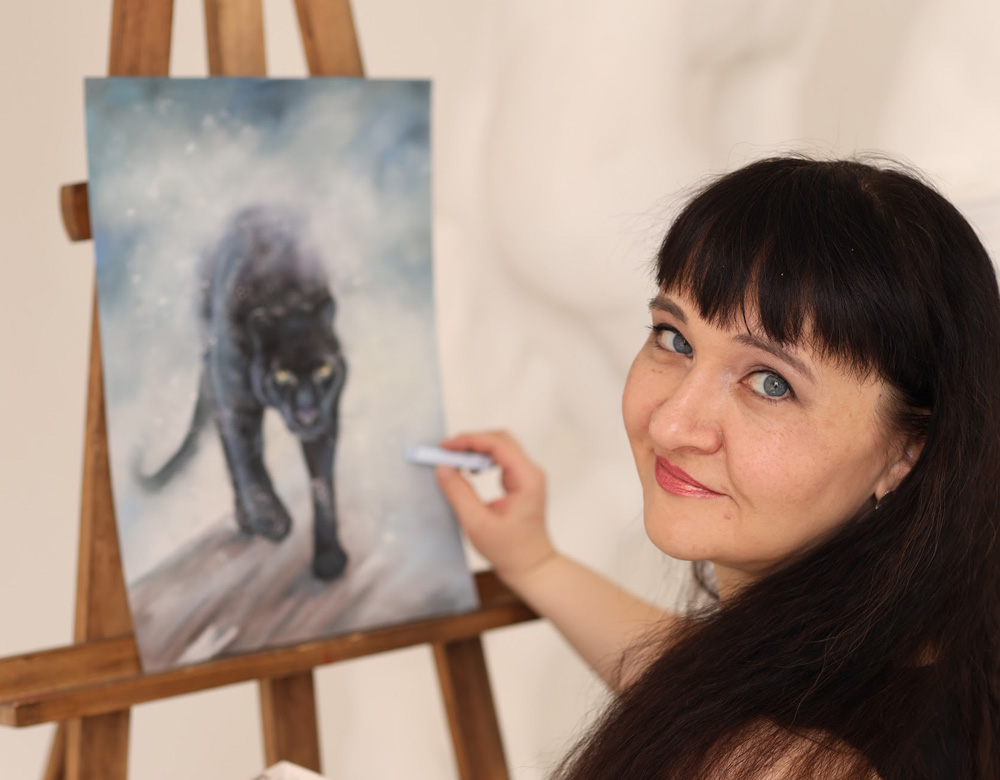
Leave a Reply